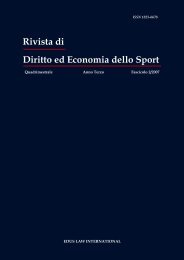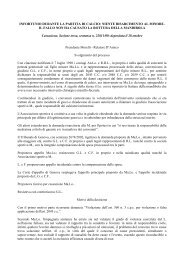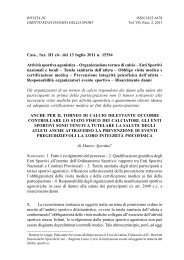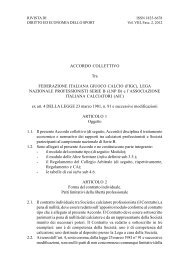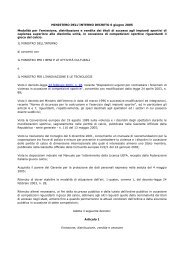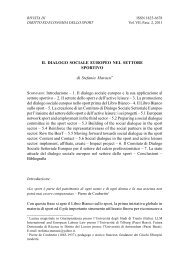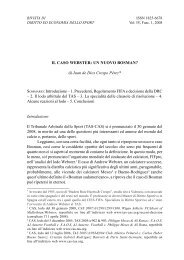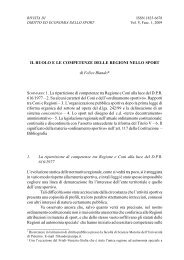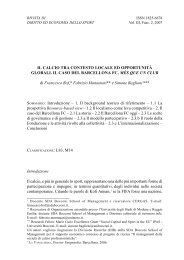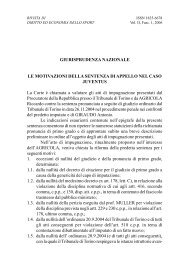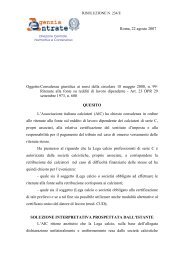Create successful ePaper yourself
Turn your PDF publications into a flip-book with our unique Google optimized e-Paper software.
20 Wladimir Andreff<br />
A more detailed analysis exhib<strong>it</strong>s that developed market economies have<br />
only few comparative advantages which concentrate on global trade of ‘equipmentintensive’<br />
goods, primarily skis, ski equipment, boats, windsurfs, golf equipment<br />
and table tennis. Emerging countries have a qu<strong>it</strong>e significant comparative advantage<br />
in sportswear and footwear, anoraks, balls, rackets, skates and gymnastic equipment,<br />
i.e. on average in ‘tr<strong>it</strong>e’ sports goods w<strong>it</strong>h a lower value added in production. A<br />
next step would be the analysis of the determinants of these international<br />
specialization patterns, the role of demand and un<strong>it</strong> production costs, namely the<br />
relationship between labour-intensive sports goods (tr<strong>it</strong>e goods) and cap<strong>it</strong>al-intensive<br />
and research-intensive sports goods (equipment-intensive goods).<br />
The production of sports goods has globalized although we still lack detailed<br />
knowledge in relation to this and the underlying international economic flows which<br />
triggers this, i.e. the phenomenon of FDI. The breakdown of available data regarding<br />
FDI is not detailed enough to precisely detect foreign investments undertaken in<br />
the sports goods industry. If one wants to assess the role of FDI and MNCs in<br />
globalization of the sports economy, there are two ways which can be followed.<br />
The first way is by observing the rates at which tr<strong>it</strong>e sports goods are reexported<br />
back to their home base developed market economies, as well as the reexports<br />
from developing and emerging countries where foreign subsidiaries and<br />
production had been relocated by MNCs. 15 The second means consists of wr<strong>it</strong>ing<br />
monographs about MNCs involved in sports goods. For instance, Salomon (then<br />
merged into Adidas) or Rossignol (now merged into Quicksilver) had invested<br />
abroad, in North American and European countries in order to supply fast growing<br />
and wealthy domestic markets – the tool here was a so-called horizontal FDI geared<br />
towards consumer demand. On the other hand, firms like Adidas, Puma, Lafuma<br />
and others invested abroad (primarily in Eastern Europe, Maghreb and Asia) in<br />
order to lower their production costs by means of a vertical FDI (diminishing input<br />
costs, for example un<strong>it</strong> labour costs). Pursuing the same goal, Nike, Reebok, and<br />
Mizuno have adopted a different strategy of production relocation in low-cost<br />
countries w<strong>it</strong>hout any FDI; they signed international subcontracting arrangements<br />
w<strong>it</strong>h Asian producers and, consequently, developed outward processing trade from<br />
emerging countries, in particular in tr<strong>it</strong>e sports goods trade. Nike went furthest in<br />
this strategy and became a hollow corporation having no longer any sports goods<br />
production in the US where the firm concentrates on conception, design, marketing,<br />
distribution and financial activ<strong>it</strong>ies. All Nike sports goods are manufactured by<br />
Asian subcontractors (mainly Indonesian, Pakistani and Chinese) and labeled ‘Nike’<br />
afterwards. More research is needed to go deeper into the analysis of various MNCs<br />
strategies in a globalized sports goods industry.<br />
The market for high-level sporting talents has also globalized. It is a labour<br />
market in which professional players and other highly talented athletes are<br />
____________________<br />
15<br />
See W. ANDREFF, L’internationalisation économique du sport, c<strong>it</strong>.; W. ANDREFF, International<br />
trade in sports goods, in W. Andreff, S. Szymanski, (eds.), Handbook on the Economics of<br />
Sports, c<strong>it</strong>., 59-67.



